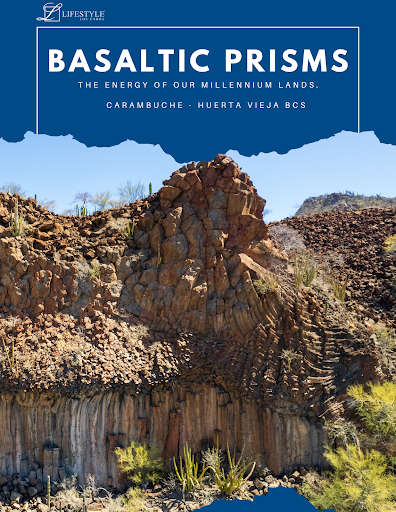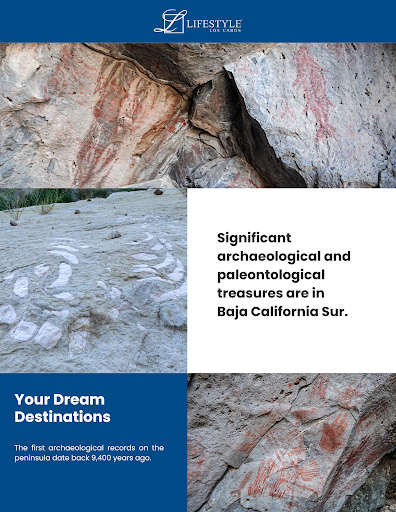
The energy that emanates from our soil aligns us with our true selves, and one way to connect is to recognize that the lands we inhabit have the energy of hundreds of thousands of years accumulated.
The archaeological and paleontological zones in Baja California Sur are fascinating, and the wealth is so great and so little explored that thousands of fans go to explore the areas, being impressed by all those treasures that tell the story of what it meant to live in these lands.
The first archaeological records on the peninsula date back 9,400 years ago.
Places like La Purísima, San Isidro, Comondú, La Paz, Cabo del Este, San José del Cabo, Santa Rosalía, Mulegé, Ciudad Constitución, Loreto, and many others in this region are true archaeological and paleontological paradises.
One of the great archaeological riches that can be visited is the Sierra de San Francisco. It is one of the most important sites due to the large number of cave paintings that can be seen there, their clear representations, and their excellent state of conservation.
Interestingly, these paintings show many symbolic and natural motifs; among the most representative are human figures and animals of different species, such as deer, pumas, whales, fish, and birds, such as the eagle.

The Baja California Sur peninsula is rich in paleontological heritage because much of it was formed under the sea. Thanks to the opening of the Gulf of California and the uplift of these lands from the bottom of the sea along with volcanic activity and movement of tectonic plates, new geological formations emerged where ravines, mesas, mountain ranges, basaltic prisms, etc., were formed.
In these new formations, marine fossils have now begun to be discovered. Hundreds of them have been rescued, but there are still hundreds to be recognized and protected for their protection.
It is a land that offers many fossils of marine mammals, and it is one of the richest and least explored regions of the Mexican Republic.
Although there is a wide range of areas to explore throughout the region, one of the most striking is the Purísima – San Isidro area, where there are enormous basaltic prisms that were formed more than 14 million years ago due to volcanic activity and the movements of oceanic and continental tectonic plates.
These geometric formations, which cover a large part of the Sierra de La Giganta mountain range, are home to great biological diversity in a desert area such as Baja California Sur. Walking its trails, one can see well-preserved fossils in the rocks, clearly showing the incredible marine life that existed there thousands of years ago.
Both geology and paleontology are absolutely rich in these lands, which has led many specialists from all over the world to become interested in studying the southern tip of the peninsula. This is very important since, as various studies are carried out, more will be known about the evolution of these lands.
Another of the most favorable areas for studying the tremendous paleontological collection is the San José del Cabo basin, located at the southern end of the peninsula and is part of the Extensional Province of the Gulf of California. Its evolution began in the late Miocene, approximately 14 million years ago. This extension would extend from Los Barriles to San José del Cabo.
It should be noted that during the period in which the basin was submerged, it reached hundreds of meters deep, becoming an attractive habitat for marine species. That is why today, we can enjoy an extensive paleontological heritage. Specialists from the UABCS, the National Autonomous University of Mexico UNAM, and specialists from the Los Angeles Museums attended several years ago to survey and classify the fossils found in the area.
We as LIFESTYLE invite you to connect and explore, to discover a part of our fascinating past in these lands that form one of the most important energy points to reconnect with the beginning of our existence.
